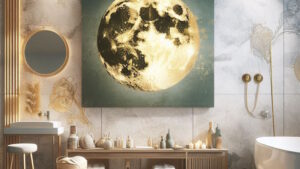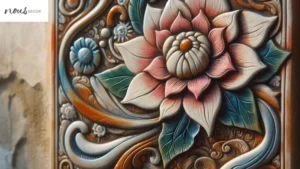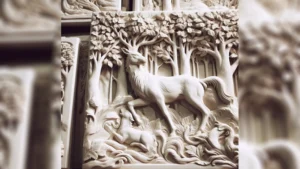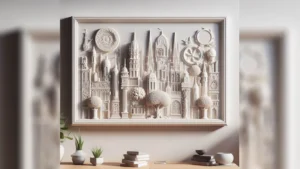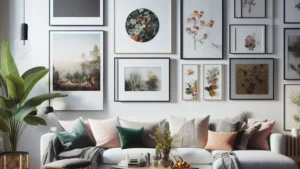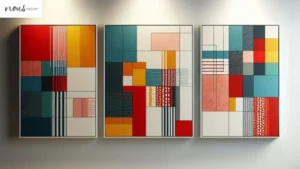Home decor can be a daunting task, especially when trying to achieve a minimalist look. However, Minimalist Plaster Wall Art offers an easy way to add visual interest to any room without clutter. With creative shapes and textures, plaster wall hangings keep things simple yet striking.
I am Mark Cutler Expertise in Interior Designer, and Chief Designer in Nousdecor, in this article, I will discuss different minimalist plaster art styles and materials to consider for your home. I will also provide tips on designing a minimalist gallery wall with plaster pieces. By the end, you’ll feel inspired to incorporate this adaptable medium into your personal decor vision.
Takeaways
- Minimalist plaster art relies on simple shapes, neutral hues, and clean lines to add style without clutter.
- Focus on texture and negative space when selecting and displaying minimalist plaster hangings.
- Abstract shapes, cutout silhouettes, textured panels, and frames make great minimalist plaster art styles.
- Clay, cement, gypsum, and polymers are common plaster materials, each with different properties.
- Aim for balance, variety, and plenty of whitespace when designing a minimalist plaster gallery wall.
How to Use Minimalist Plaster Wall Art
The minimalist design relies on clean lines, plenty of white space, and little ornamentation. This makes it the perfect complement to modern plaster wall art, which uses subtle shapes and muted colors to make a statement.
Here are some ways to effectively use minimalist plaster wall hangings:
- Focus on shape and texture. Look for pieces with geometric or organic silhouettes and interesting plaster molding. This adds visual interest without complicating the look.
- Use art in a grouping. Hang plaster pieces in groupings of 2-4 to create a gallery wall. Include some whitespace around and between each piece.
- Keep the color palette neutral. Stick to white, black, and natural plaster hues. Pops of color can work in moderation.
- Consider placement carefully. Position plaster art high on the wall with plenty of open space below to enhance the minimalist aesthetic.
- Mix media for contrast. Combine plaster wall art with other textures like wood, metal, or canvas for depth.
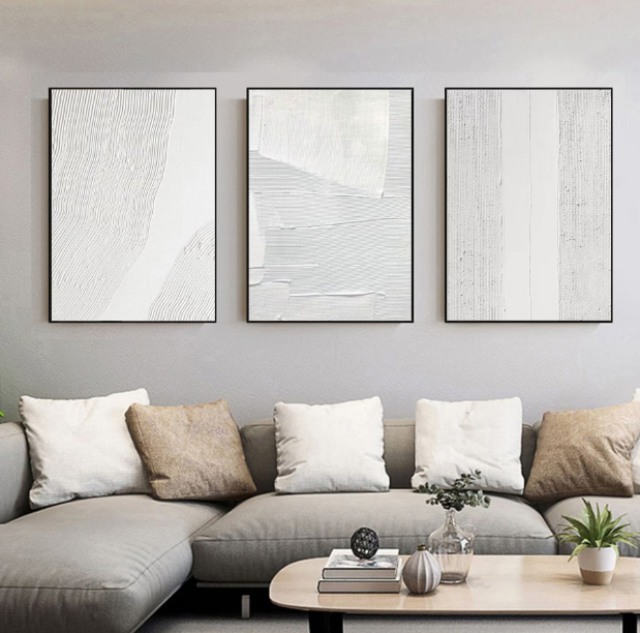
Plaster Wall Art Styles
There are endless options when it comes to plaster wall art. Here are some of the most popular minimalist styles:
Abstract Shapes
Abstract plaster shapes have an organic, asymmetrical look, often resembling leaves, feathers, or shells. They make a subtle statement without obvious subject matter. Abstract wall sculptures come in flowing lines or geometric blocked designs. Both can add movement and interest to blank walls.
Cutout Silhouettes
Cutout silhouettes use negative space to form art. The plaster is shaped around voids rather than building up relief. Common silhouette shapes include trees, birds, leaves, or botanicals. When hung in groups, they create patterns and textures. Backlighting cutout silhouettes cast intriguing shadows on the wall.
Textured Panels
Textured plaster panels feature bas-relief surfaces molded into rhythmic patterns. Options range from orderly geometrics to random organic textures resembling sand, bark, or other natural elements. Large textured panels make great accent walls. Smaller panels can be grouped into an eclectic grid.
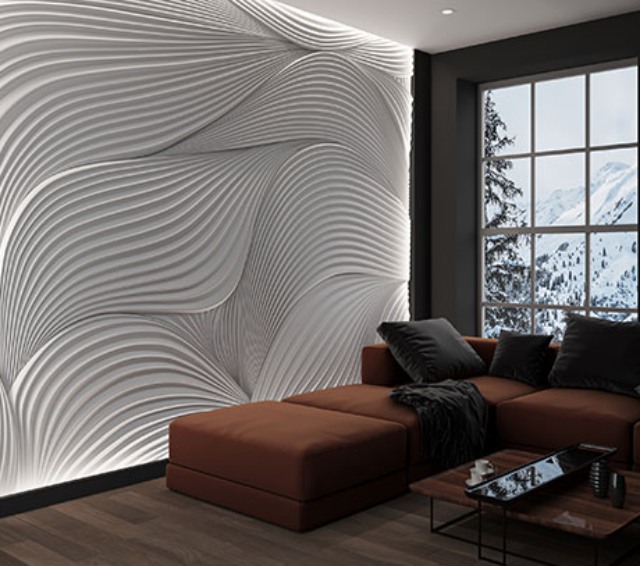
Minimalist Frames
Plaster frames play on the concept of negative space. They outline rectangular voids to display what’s inside the frame (often more blank walls). Thick, rounded, or textured frames become the focal point. Keep framing minimalist by selecting neutral colors and clean lines.
Plaster Wall Art Materials
Plaster art comes in a variety of materials for DIY plaster canvas art, each with different properties. Here are some common options when choosing the right supplies for plaster wall decor:
- Clay Plaster – Made from natural clay, sand, and lime mixed with water. It has an organic, mottled appearance once dry. Clay plaster is heavy.
- Cement Plaster – A mix of cement, lime, and sand that produces a smooth, concrete-like finish. It dries hard and is durable.
- Gypsum Plaster – The most common and affordable plaster for wall art. Gypsum plaster is lightweight, smooth, bright white, and easily shaped.
- Polymers – Liquid polymers added to plaster strengthen it and reduce cracking. They also create a brighter white, glossy finish.
- Hollow – Hollow pieces are made using support structures inside to reduce weight. This makes large pieces easier to hang.
Consider both material and weight when choosing statement plaster art for your wall.
Designing a Minimalist Plaster Gallery Wall
Grouping minimalist plaster wall hangings into a gallery wall display can make a striking design statement. Here are some tips for creating your own:
- Start with a focal point. Choose one prominent, larger-scale plaster piece to anchor the arrangement.
- Include a mix of sizes and shapes. Combine sculptures, panels, silhouettes, and more for interest. Vary heights and widths.
- Focus on negative space. Position pieces to maximize blank wall space around and between them. Too many pieces crammed together lose the minimalist look.
- Keep it simple. Limit decorative embellishments. Avoid ornate frames or relying too much on color. Let the textures and shapes speak for themselves.
- Find balance. Symmetrical and grid layouts work well for minimalist galleries. Play with left/right and top/bottom balance.
- Use leveling. Make sure all hangings align for a clean look. Use a level and template to mark hook positions accurately.
With thoughtful composition and quality plaster pieces, you can design an eye-catching yet minimalist art wall. The key is exercising creative restraint.

Frequently Asked Questions
Conclusion
Incorporating minimalist plaster art is a sophisticated way to decorate that doesn’t sacrifice style for simplicity is one of the best wall art solutions for homes. With an abundance of shapes, textures, and materials to choose from, plaster art offers endless options to suit any space.
Once you understand key techniques like utilizing negative space, keeping color schemes neutral, and highlighting texture, it’s easy to design a stunning, clutter-free look. Your home’s blank walls are the perfect canvas for this adaptable medium.
With a carefully curated collection of plaster wall hangings, you can create a peaceful, artful retreat that dazzles in its minimalism.

